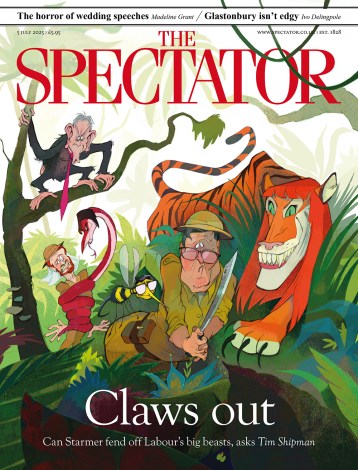For all the billion-dollar turnovers and glamorous, high-profile sales in New York, London, Hong Kong and Paris, the top level of fine-art auctioneering is a notoriously high-overhead, low-profit business. At times, it is even a no-profit business (Sotheby’s made a loss last year). How the Big Two auction houses have grappled to respond to this uncomfortable fact has shaped recent saleroom history.
First came collusion and price-fixing, which resulted in damaging — in every sense of the word — antitrust litigation in the US, and then brave but initially unsuccessful attempts to harness the internet revolution, with sothebys.com. Most recently, the duopoly’s response to the profit problem has been to use the specialist skills of their employees to develop complementary non-auction business. The first steps towards diversification were, of course, made way before any whiff of scandal, with the creation of Sotheby’s Institute of Art in 1969 and Christie’s Education in 1978. So rapidly has this process accelerated in recent years, however, that the two companies are now almost unrecognisable.
From international fine-art auctioneers they have transformed themselves into multifaceted global luxury goods and finance companies. As one chairman of another — there is no rival — auction house said to me recently, Sotheby’s and Christie’s offer better wealth-management services than most wealth managers. Certainly these new, bespoke, highly professional services cater to the high net-worth individual. Not least, those from the ‘I want it now’ generation.
It seems as though there is nothing the Big Two cannot help you buy. They can find you a fabulous home — and a second or third one, too. After acquiring a metropolitan penthouse or townhouse, you could indulge in an historic mansion, a private island, a ranch. If you care for golf, there is Porcupine Creek, a 249-acre estate boasting one of the best golf courses in California (Christie’s Great Estates, $75 million). They are only too happy to oblige in helping find furniture and works of art to furnish them all, and arrange the shipping.
To keep track of your collection, there is Sotheby’s icollect, a cutting-edge collection-management system. To insure it, Christie’s has recently introduced bespoke ‘seamless’ insurance that encompasses art, jewellery, homes and cars, all in one convenient policy. To borrow against it, Sotheby’s Financial Services, for instance, offers consignment advances and term loans, usually of 30–50 per cent of a collection’s value. Last year’s revenues amounted to $9 million. To store the overflow, there is Christie’s Fine Art Security Services (CFASS). Initially in London, CFASS has recently opened a new facility in the Singapore Freeport and is opening another in New York in May.
There is scope for personal embellishment, also. As the publicity puts it: ‘When you don’t have time to wait for our seasonal auctions, make Sotheby’s Diamonds your source for magnificent jewels.’ And when you are no more, there are the requisite departments to offer estate valuations, tax and heritage property advice, and even deal with restitution claims.
Why stop at the private collector? Both houses have departments dedicated to servicing corporate and museum clients. The fruit of such enterprise was revealed most recently in Amsterdam three weeks ago when Sotheby’s staged the hugely successful sale of works from what was known as the Peter Stuyvesant Collection. Commissioned to enliven the working environment of staff in the Dutch cigarette factory from 1960, these 161 lots totalled €13.5 million, more than double the high estimate. As for Sotheby’s Museum Services, it has sold more than $80 million worth of property from over 70 institutions in the past ten years.
Most controversial — at least for the art trade — has been the auction-houses’ incursion into the traditional domain of the art dealer. First came partnerships. In 1990, Sotheby’s formed a holding company with New York dealer William Acquavella to buy — for $143 million — the stock of the Pierre Matisse Gallery, probably the finest inventory of 20th-century art in the world. In 2006, the firm acquired Noortman Master Paintings, dealers specialising in Dutch and Flemish Old Masters and French Impressionism. Responding to the boom in contemporary art, Christie’s took over the art dealership Haunch of Venison the following year. With galleries in London, Zurich, Berlin and, subsequently, New York, the business operates in both the primary and secondary markets. It would be fair to say that these moves have strained the often uneasy but mutually dependent relationship between auctioneer and dealer.
That strain is even more acute now that both houses have targeted the private sales business — that is, dealing — as the uncertain economic climate prompted a paring down of the auction calendar. Sotheby’s figures reveal that its staff negotiated — for a bonus — private sales of $473 million last year, up 26 per cent on 2008. Auction sales halved to $2.3 billion. Christie’s now considers private sales as part of its core business. Last year they accounted for 13 per cent of total sales. According to Helena Newman, vice-chairman of Impressionist & Modern Art Worldwide at Sotheby’s, her department saw a ‘significant’ rise in private sales during the second half of last year. She believes this method of sale works well when clients have a fixed price they want to achieve and where the department knows buyers who would like to acquire that work of art, and when clients want to sell quickly and discreetly, without prices blazed across Artnet. It is, of course, a less transparent process than a public auction.
Ironically, as Sotheby’s recently demonstrated in London with the sale of a cast of Giacometti’s ‘L’Homme qui marche 1’ for a world auction record price of £65 million, it is only at auction that a work of art can achieve an eye-watering price unthinkable in a private sale. As Christie’s chief operating officer Lisa King explains, high-profile international sales are hugely profitable in the good times. For the bad times, there is the solid, reliable middle market (Sotheby’s has long abandoned its lower-value sales in New York, London and Amsterdam). South Kensington saw annual sales of £74 million last year — just 4 per cent down on the previous year; King Street’s sales halved.
As for the third prong of its business strategy, diversified businesses, it is no coincidence that Christie’s has been investing in the blissfully counter-cyclical services of storage and insurance. As a private company, it is not obliged to publish its figures but, Ms King assures me, it made a profit even last year.






Comments